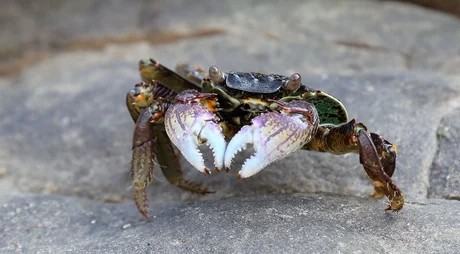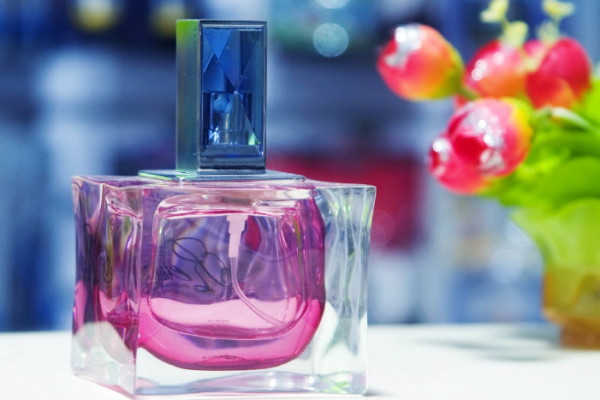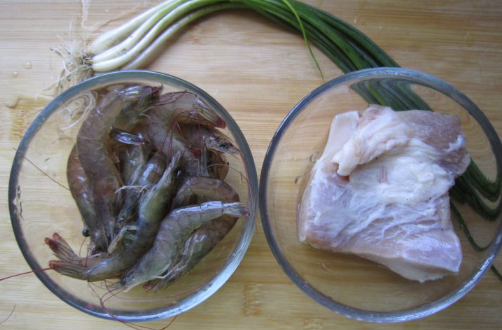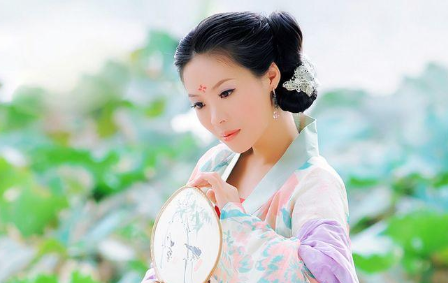本文目录
春节的起源英文介绍
春节的起源英文介绍
春节又称元日、元旦、无正、元辰、元朔、岁旦、岁首、岁朝、新正、首祚、三元或年、过年,为夏历新年的第一天。以下是我整理的春节的起源英文介绍,欢迎阅读!

Spring Festival
The Spring Festival is the most important festival for the Chinese people and is when all family members get together, just like Christmas in the West. All people living away from home go back, becoming the busiest time for transportation systems of about half a month from the Spring Festival. Airports, railway stations and long-distance bus stations are crowded with home returnees.
The Spring Festival falls on the 1st day of the 1st lunar month, often one month later than the Gregorian calendar. It originated in the Shang Dynasty (c. 1600 BC-c. 1100 BC) from the people's sacrifice to gods and ancestors at the end of an old year and the beginning of a new one.
Strictly speaking, the Spring Festival starts every year in the early days of the 12th lunar month and will last till the mid 1st lunar month of the next year. Of them, the most important days are Spring Festival Eve and the first three days. The Chinese government now stipulates people have seven days off for the Chinese Lunar New Year.
Many customs accompany the Spring Festival. Some are still followed today, but others have weakened.
On the 8th day of the 12th lunar month, many families make laba porridge, a delicious kind of porridge made with glutinous rice, millet, seeds of Job's tears, jujube berries, lotus seeds, beans, longan and gingko.
The 23rd day of the 12th lunar month is called Preliminary Eve. At this time, people offer sacrifice to the kitchen god. Now however, most families make delicious food to enjoy themselves.
After the Preliminary Eve, people begin preparing for the coming New Year. This is called "Seeing the New Year in".
Store owners are busy then as everybody goes out to purchase necessities for the New Year. Materials not only include edible oil, rice, flour, chicken, duck, fish and meat, but also fruit, candies and kinds of nuts. What's more, various decorations, new clothes and shoes for the children as well as gifts for the elderly, friends and relatives, are all on the list of purchasing.
Before the New Year comes, the people completely clean the indoors and outdoors of their homes as well as their clothes, bedclothes and all their utensils.
Then people begin decorating their clean rooms featuring an atmosphere of rejoicing and festivity. All the door panels will be pasted with Spring Festival couplets, highlighting Chinese calligraphy with black characters on red paper. The content varies from house owners' wishes for a bright future to good luck for the New Year. Also, pictures of the god of doors and wealth will be posted on front doors to ward off evil spirits and welcome peace and abundance.
The Chinese character "fu" (meaning blessing or happiness) is a must. The character put on paper can be pasted normally or upside down, for in Chinese the "reversed fu" is homophonic with "fu comes", both being pronounced as "fudaole." What's more, two big red lanterns can be raised on both sides of the front door. Red paper-cuttings can be seen on window glass and brightly colored New Year paintings with auspicious meanings may be put on the wall.
People attach great importance to Spring Festival Eve. At that time, all family members eat dinner together. The meal is more luxurious than usual. Dishes such as chicken, fish and bean curd cannot be excluded, for in Chinese, their pronunciations, respectively "ji", "yu" and "doufu," mean auspiciousness, abundance and richness. After the dinner, the whole family will sit together, chatting and watching TV. In recent years, the Spring Festival party broadcast on China Central Television Station (CCTV) is essential entertainment for the Chinese both at home and abroad. According to custom, each family will stay up to see the New Year in.
Waking up on New Year, everybody dresses up. First they extend greetings to their parents. Then each child will get money as a New Year gift, wrapped up in red paper. People in northern China will eat jiaozi, or dumplings, for breakfast, as they think "jiaozi" in sound means "bidding farewell to the old and ushering in the new". Also, the shape of the dumpling is like gold ingot from ancient China. So people eat them and wish for money and treasure.
Southern Chinese eat niangao (New Year cake made of glutinous rice flour) on this occasion, because as a homophone, niangao means "higher and higher, one year after another." The first five days after the Spring Festival are a good time for relatives, friends, and classmates as well as colleagues to exchange greetings, gifts and chat leisurely.
Burning fireworks was once the most typical custom on the Spring Festival. People thought the spluttering sound could help drive away evil spirits. However, such an activity was completely or partially forbidden in big cities once the government took security, noise and pollution factors into consideration. As a replacement, some buy tapes with firecracker sounds to listen to, some break little balloons to get the sound too, while others buy firecracker handicrafts to hang in the living room.
The lively atmosphere not only fills every household, but permeates to streets and lanes. A series of activities such as lion dancing, dragon lantern dancing, lantern festivals and temple fairs will be held for days. The Spring Festival then comes to an end when the Lantern Festival is finished.
China has 56 ethnic groups. Minorities celebrate their Spring Festival almost the same day as the Han people, and they have different customs.
扩展阅读:春节习俗
扫尘
“腊月二十四,掸尘扫房子” ,据《吕氏春秋》记载,我国在尧舜时代就有春节扫尘的风俗。按民间的说法:因“尘”与“陈”谐音,新春扫尘有“除陈布新”的涵义,其用意是要把一切穷运、晦气统统扫出门。这一习俗寄托着人们破旧立新的愿望和辞旧迎新的祈求。 每逢春节来临,家家户户都要打扫环境,清洗各种器具,拆洗被褥窗帘,洒扫六闾庭院,掸拂尘垢蛛网,疏浚明渠暗沟。到处洋溢着欢欢喜喜搞卫生、干干净净迎新春的欢乐气氛。
贴春联
春联也叫门对、春贴、对联、对子、桃符等,它以工整、对偶、简洁、精巧的文字描绘时代背景,抒发美好愿望,是我国特有的文学形式。每逢春节,无论城市还是农村,家家户户都要精选一幅大红春联贴于门上,为节日增加喜庆气氛。这一习俗起于宋代,在明代开始盛行,到了清代,春联的思想性和艺术性都有了很大的提高,梁章矩编写的春联专著《槛联丛话》对楹联的起源及各类作品的特色都作了论述。
春联的种类比较多,依其使用场所,可分为门心、框对、横披、春条、斗方等。“门心”贴于门板上端中心部位;“框对”贴于左右两个门框上;“横披”贴于门媚的横木上;“春条”根据不同的内容,贴于相应的地方;“斗斤”也叫“门叶”,为正方菱形,多贴在家俱、影壁中。
贴窗花和倒贴“福”字
在民间人们还喜欢在窗户上贴上各种剪纸——窗花,窗花不仅烘托了喜庆的节日气氛,也集装饰性、欣赏性和实用性于一体。剪纸在我国是一种很普及的民间艺术,千百年来深受人们的喜爱,因它大多是贴在窗户上的,所以也被称其为“窗花”。窗花以其特有的概括和夸张手法将吉事祥物、美好愿望表现得淋漓尽致,将节日装点得红火富丽。
在贴春联的同时,一些人家要在屋门上、墙壁上、门楣上贴上大大小小的“福”字。春节贴“福”字,是我国民间由来已久的.风俗。“福”字指福气、福运,寄托了人们对幸福生活的向往,对美好未来的祝愿,为了更充分地体现这种向往和祝愿,有的人干脆将“福”字倒过来贴,表示“幸福已到”“福气已到”。民间还有将“福”字精描细做成各种图案的,图案有寿星、寿桃、鲤鱼跳龙门、五谷丰登、龙凤呈祥等。
年画
春节挂贴年画在城乡也很普遍,浓黑重彩的年画给千家万户平添了许多兴旺欢乐的喜庆气氛。年画是我国的一种古老的民间艺术,反映了人民朴素的风俗和信仰,寄托着他们对未来的希望,年画,也和春联一样,起源于“门神”。 随着木板印刷术的兴起,年画的内容已不仅限于门神之类单调的主题,变得丰富多彩,在一些年画作坊中产生了《福禄寿三星图》、《天官赐福》、《五谷丰登》、《六畜兴旺》、《迎春接福》等精典的彩色年画、以满足人们喜庆祈年的美好愿望。 我国出现了年画三个重要产地:苏州桃花坞,天津杨柳青和山东潍坊;形成了中国年画的三大流派,各具特色。
我国现今我国收藏最早的年画是南宋《随朝窈窕呈倾国之芳容》的木刻年画,画的是王昭君、赵飞燕、班姬和绿珠四位古代美人。民间流传最广的是一幅《老鼠娶亲》的年画,描绘了老鼠依照人间的风俗迎娶新娘的有趣场面。民国初年,上海郑曼陀将月历和年画二者结合起来。这是年画的一种新形式。这种合二而一的年画,以后发展成挂历,至今风靡全国。
守岁
除夕守岁是最重要的年俗活动之一,守岁之俗由来已久,最早记载见于西晋周处的《风土志》:除夕之夜,各相与赠送,称为“馈岁”;酒食相邀,称为“别岁”;长幼聚饮,祝颂完备,称为“分岁”;大家终夜不眠,以待天明,称曰“守岁”。
“一夜连双岁,五更分二天”,除夕之夜,全家团聚在一起,吃过年夜饭,点起蜡烛或油灯,围坐炉旁闲聊,等着辞旧迎新的时刻,通宵守夜,象征着把一切邪瘟病疫照跑驱走,期待着新的一年吉祥如意。这种习俗后来逐渐盛行,到唐朝初期,唐太宗李世民写有“守岁”诗:“寒辞去冬雪,暖带入春风”,直到今天,人们还习惯在除夕之夜守岁迎新。
古时守岁有两种含义:年长者守岁为“辞旧岁”,有珍爱光阴的意思;年轻人守岁,是为延长父母寿命。自汉代以来,新旧年交替的时刻一般为夜半时分。
爆竹
中国民间有“开门爆竹”一说。即在新的一年到来之际,家家户户开门的第一件事就是燃放爆竹,以哔哔叭叭的爆竹声除旧迎新。爆竹是中国特产,亦称“爆仗”、“炮仗”、“鞭炮”。其起源很早,至今已有两千多年的历史。放爆竹可以创造出喜庆热闹的气氛,是节日的一种娱乐活动,可以给人们带来欢愉和吉利,随着时间的推移,爆竹的应用越来越广泛,品种花色也日见繁多,每逢重大节日及喜事庆典,及婚嫁、建房、开业等,都要燃放爆竹以示庆贺,图个吉利。现在,湖南浏阳,广东佛山和东尧,江西的宜春和萍乡、浙江温州等地区是我国著名的花炮之乡,生产的爆竹花色多,品质高,不仅畅销全国,而且还远销世界。
拜年
新年的初一,人们都早早起来,穿上最漂亮的衣服,打扮得整整齐齐,出门去走亲访友,相互拜年,恭祝来年大吉大利。拜年的方式多种多样,有的是同族长带领若干人挨家挨户地拜年;有的是同事相邀几个人去拜年;也有大家聚在一起相互祝贺,称为“团拜”。由于登门拜年费时费力,后来一些上层人物和士大夫便使用各贴相互投贺,由此发展出来后来的“贺年片”。
春节拜年时,晚辈要先给长辈拜年,祝长辈人长寿安康,长辈可将事先准备好的压岁钱分给晚辈,据说压岁钱可以压住邪祟,因为“岁”与“祟”谐音,晚辈得到压岁钱就可以平平安安度过一岁,压岁钱有两种,一种是以彩绳穿线编作龙形,置于床脚,此记载见于《燕京岁时记》;另一种是最常见的,即由家长用红纸包裹分给孩子的钱,压岁钱可在晚辈拜年后当众赏给,亦可在除夕夜孩子睡着时,由家长偷偷地放在孩子的枕头底下。现在长辈为晚辈分送压岁钱的习俗仍然盛行。
;
英语介绍春节50字 必好评
The Spring Festival, the Chinese Lunar New Year, is commonly known as the new year, the new year, the new year's day and so on.
春节,即中国农历新年,俗称新春、新岁、岁旦等,口头上又称过年、过大年。
The Spring Festival has a long history, which evolved from the worship of the first year in ancient times.
春节历史悠久,由上古时代岁首祈岁祭祀演变而来。

春节习俗:
1、拜岁
拜岁,年俗活动之一。在岁首早上迎新岁,拜祭“岁神”。“岁”又名为“摄提”、“太岁”,上古纪元星名。太岁也是民间信仰的神灵。岁以六十甲子的干支纪年法为运转周期,共六十位,每年有一位岁神当值,在当年当值的太岁谓之“值年太岁”,是一岁之主宰,掌管当年人间的吉凶祸福。
2、庙会
逛庙会是春节期间的民俗活动之一。广府庙会与北京地坛庙会并称中国两大庙会。涵盖木偶荟萃、中华绝活、武林大会、元宵灯会等主题活动,包含了祈福文化、民俗文化、美食文化、商贸休闲文化等丰富的内容。
春节的来历和习俗英文版
写作思路:主要写出春节的来历和习俗。
正文:
The origin of the Spring Festival contains profound cultural connotation, which carries rich historical and cultural heritage in the process of inheritance and development. During the Spring Festival, all kinds of celebrations are held all over the country, with strong regional characteristics.
春节的起源蕴含着深邃的文化内涵,在传承发展中承载了丰厚的历史文化底蕴。在春节期间,全国各地均有举行各种庆贺新春活动,带有浓郁的各地域特色。

These activities are mainly about the old and new cloth, the exorcism, the worship of gods, the blessing of the year, and the rich and colorful forms, which are the essence of Chinese traditional culture.
这些活动以除旧布新、驱邪攘灾、拜神祭祖、纳福祈年为主要内容,形式丰富多彩,凝聚着中华传统文化精华。
The Spring Festival is a folk festival integrating worship of gods and ancestors, praying for blessings and ward off evil spirits, family reunion, celebration, entertainment and diet.
春节是集拜神祭祖、祈福辟邪、亲朋团圆、欢庆娱乐和饮食为一体的民俗大节。
The Spring Festival is the most grand traditional festival of the Chinese nation. Influenced by Chinese culture, some countries and regions in the world also have the custom of celebrating the new year.
百节年为首,春节是中华民族最隆重的传统佳节。受到中华文化的影响,世界上一些国家和地区也有庆贺新春的习俗。
According to incomplete statistics, nearly 20 countries and regions have designated Chinese Spring Festival as a legal holiday for the whole or some cities under their jurisdiction.
据不完全统计,已有近20个国家和地区把中国春节定为整体或者所辖部分城市的法定节假日。
春节的来历英文版00字
Of all the traditional Chinese festivals, the new Year was perhaps
the most elaborate, colorful, and important.
This was a time for the
Chinese to congratulate each other and themselves on having passed
through another year, a time to finish out the old, and to welcome in
the new year.
Common expressions heard at this time are: GUONIAN to have
made it through the old year, and BAINIAN to congratulate the new year.
众多中国传统节日中,春节或许是最隆重盛大,富有色彩,最重要的节日了。这是一个中国人共同欢度,庆祝过去的一年,辞旧迎新的节日。
春节里常听到的话是:过年,意思是辞去过去的一年;拜年,意思是庆祝新的一年。

but many believe the word Nian, which means "year", was the name of a beast that preyed on people on the eve of a new year.
然而大家大都相信“年”这个词,是一种怪兽的名字,它在每年的除夕夜里出来捕食人。
In one legend, the beast, Nian, had the power to swallow up all the
people in a village in one big bite. Village people were very scared of
Nian.
One day, an old man came to the villagers' rescue, offering to
subdue Nian. The old man asked Nian, "I know you can swallow people, but
can you swallow other beasts of prey instead of people who are by no
means your worthy opponents?"
Nian accepted the old man's challenge and
swallowed the beasts that had harassed the villagers and their farm
animals for years. At the end of the legend, the old man disappeared
riding off on Nian.
In this legend, the old man turned out to be an
immortal god. In the end, Nian is gone and the other beasts of prey are
scared into hiding in the forests. The villagers can once again enjoy
their peaceful life.
传说中,“年”这个怪兽,有能力一口吞掉一个村庄的人。人们都很害怕“年”。
一天,一位老人帮村民们征服了“年”。他对“年”说:“我听说你很有能耐,但你能否把地球上其它的野兽都吃掉,而不是这些根本不是你对手的人类呢?”
“年”接受了老人的挑战,若干年里吃掉了好多害人和捕食农场动物的野兽。传说的结尾,老人骑着怪兽“年”消失了。原来传说中的这个老人是一位神仙。
最后,怪兽“年”被赶走了,其他捕食的野兽也都吓得躲进了森林。村民们又过上了平静的日子。
From then on,the tradition of observing the conquest of Nian is
carried on from generation to generation.
The term "Guo Nian", which
means "Survive the Nian" became "Celebrate the Year" and the word "guo"
in Chinese means both "pass over" and "observe".
从那以后,庆祝征服“年”的传统就一代一代传下来了。“过年”(征服怪兽“年”,得以生存)现在演变成“庆祝新年”。
“过”这个词在中文里面既包含“逾越,度过”又包含“庆祝”的意思。
扩展资料:
春节,即农历新年,一年之岁首,传统上的“年节”。俗称新春、新岁、新年、新禧、年禧、大年等,口头上又称度岁、庆岁、过年、过大年。
春节历史悠久,由上古时代岁首祈年祭祀演变而来。万物本乎天、人本乎祖,祈年祭祀、敬天法祖,报本反始也。
春节的起源蕴含着深邃的文化内涵,在传承发展中承载了丰厚的历史文化。在春节期间,全国各地均有举行各种庆贺新春活动,热闹喜庆气氛洋溢;
这些活动均以除旧布新、迎禧接福、拜神祭祖、祈求丰年为主要内容,形式丰富多彩,带有浓郁的各地域特色。
以上就是关于拜年由来英文50字,新年的来历要英汉对照的的全部内容,以及拜年由来 的相关内容,希望能够帮到您。
版权声明:本文来自用户投稿,不代表【蒲公英】立场,本平台所发表的文章、图片属于原权利人所有,因客观原因,或会存在不当使用的情况,非恶意侵犯原权利人相关权益,敬请相关权利人谅解并与我们联系(邮箱:350149276@qq.com)我们将及时处理,共同维护良好的网络创作环境。










